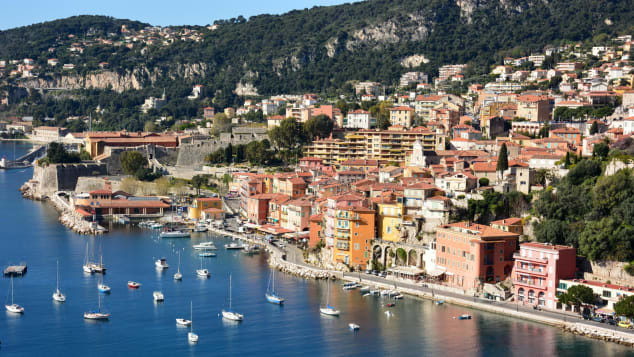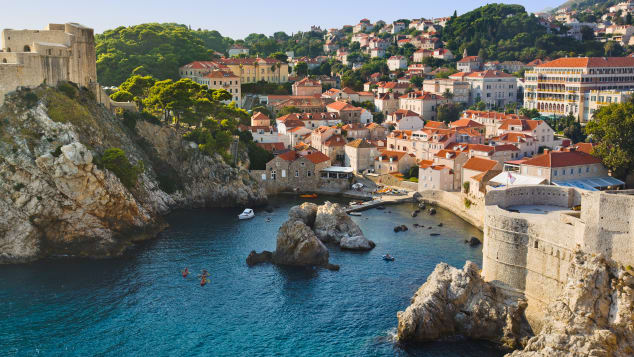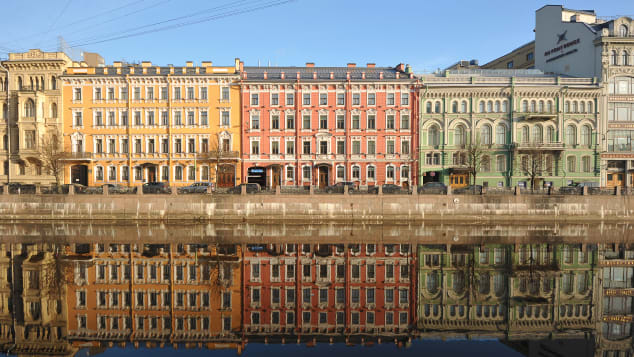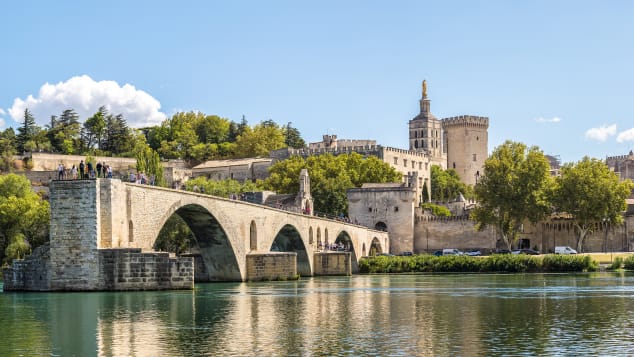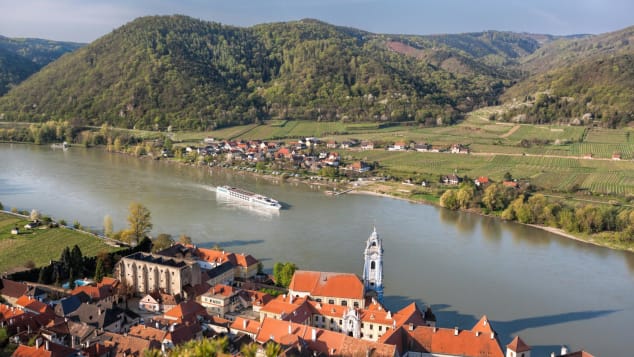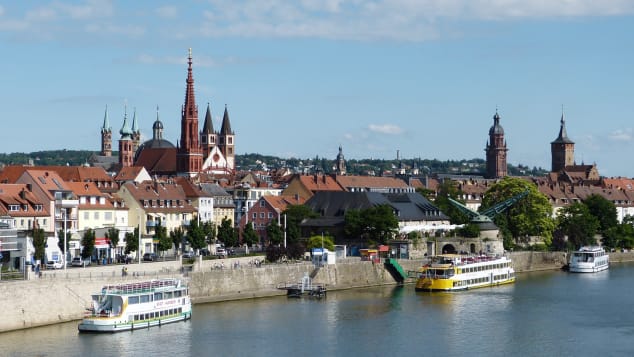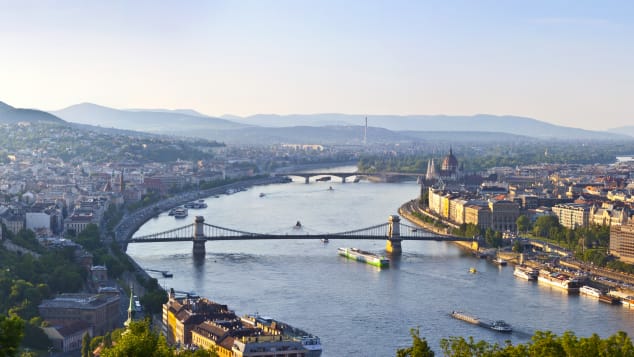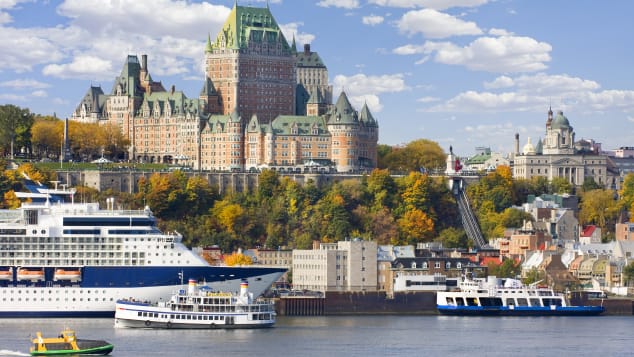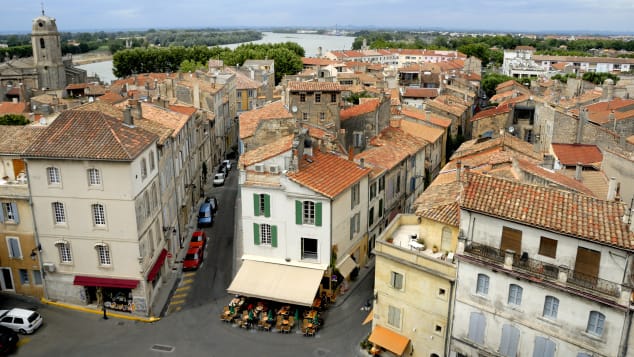Cruise Critic's most popular cruise ship destinations for 2018
(CNN) — Caribbean? What Caribbean?
Some of this year's most popular cruise destinations from Cruise Critic -- including the No. 1 spot -- may surprise you.
The cruise review company just released its 2018 Critic's Cruisers' Choice Destination Awards, and the top 10 picks for 2018 encompass both river cruise and ocean liner ports.
Consumer ratings determined the finalists from 18 cruise regions around the world.
"Our data regularly shows that whether you're a first-time cruiser or you've sailed dozens of times, destination is a top consideration when shopping for a cruise," said Cruise Critic's Senior Executive Editor Colleen McDaniel.
Here are the top 10 choices:
10. Villefranche, France
Villefranche, France
Shutterstock
That's okay if you haven't heard of Villefranche, also called Villefranche-sur-Mer, as the seaside village is tucked away between its more famous neighbors of Nice and Monaco.
Being overlooked has helped the former fishing village retain its charm, particularly the Old Town section with its 13th-century buildings.
Related content
The most beautiful places in France for you to explore
While it's tempting to stick to the harbor, lined with sidewalk cafes and a sandy beach, those who are willing to trek up the steep, staircase-lined hills will be rewarded with Old Town's shops and dining options, along with more authentic, and more affordable, food choices.
Exploring will also provide a glimpse into local life on the French Riviera — one that's heavily influenced by Italy considering the town is about an hour's drive from the border.
Other attractions worth visiting are the 16th-century Saint Elme Citadel and the local markets.
9. Dubrovnik, Croatia
Dubrovnik, Croatia
Shutterstock
Dubrovnik's terracotta-topped buildings are a flattering contrast against the cerulean blue Adriatic Sea.
Despite the city's seventh-century roots, today's visitors are just as likely to seek out the filming locations for "Game of Thrones" and "Star Wars" (spoiler alert: the Stradum, Old Town's main drag, is one of them), as they are the city's ancient fortified walls.
Related content
Either way, car-free Old Town is the center of the action, whose medieval architecture has been preserved and restored following a 17th-century earthquake and the Croatian War of Independence in the '90s.
This UNESCO site can be apprecited by wandering the cobblestone streets, lined with restaurants and shops, or by riding the cable car to the top of Mount Srd for an unbeatable overview of Old Town.
Back at sea level, the historic Rector's Palace, in use since the 1400s, provides background on the city's past.
An escape from the city (but probably not the crowds) can be found by walking to nearby Banje Beach, a small sandy section with a beach bar, beach beds and showers.
8. St. Petersburg, Russia
St. Petersburg, Russia
Shutterstock
Winter, Tchaikovsky and the Hermitage are some of the common words that spring to mind when describing St. Petersburg, the former capital located on the Baltic Sea.
Perhaps less known is the fact that Peter the Great imparted a European flair to the city, as evidenced in its canals, boulevards and architecture.
Or the fact that the city experiences almost 24 hours a day of sunlight between May and July, a period dubbed White Nights that brings additional concerts, festivals and general outdoor festivities.
Related content
The most remote places on Earth
But no visit would be complete without catching a ballet or opera at either the Mikhailovsky Theatre or Mariinsky Theatre, or viewing the massive State Hermitage Museum collection inside the ornate green and gold baroque Winter Palace.
And the Church of the Savior on Spilled Blood, whose image is interchangeably associated with the city, is undoubtedly on the list of every amateur and professional photographer.
Its dark name is a stark contrast to the building's five whimsical orb-shaped domes, resembling Christmas ornaments outfitted in blue, green and gold.
While all of these heavyweights warrant repeat visits, the Fabergé Museum is equally worthy, displaying the largest, privately owned collection of Fabergé pieces, from Easter eggs to jewelry.
7. Avignon, France
Avignon, France
Shutterstock
Forget the Vatican: Avignon in Provence reigned supreme over the Roman Catholic universe from 1309 to 1377.
To this day the papal palace, Palais des Papes, survives intact and is a protected UNESCO World Heritage Site.
Architecture buffs will appreciate that it's considered the world's largest Gothic palace, and while the ex-papal home is now mostly devoid of its finery, tours provide tablets that depict original interiors.
Related content
12 best shopping cities in the world
The papal legacy can also be felt walking through Avignon's medieval streets.
Nearby Palais des Papes, Musée du Petit Palais attracts crowds for its Renaissance collection, and the UNESCO building once served as a fort in the Middle Ages.
And the Pont d'Avignon bridge is also worth mentioning, since the surviving half of this 14th-century structure makes an arresting impression.
But Avignon isn't just an ode to the past.
It also holds the Festival d'Avignon every July, a massive weeks-long performing arts festival that draws thousands of people from around the world.
6. Durnstein, Austria
Durnstein, Austria
Shutterstock
It's impossible to gaze upon Dürnstein's reddish-sloped roofs -- clustered at the banks of the Danube river and surrounded by vivid green hills -- and not hear the buoyant notes of the Blue Danube Waltz.
The domain of fairytales, UNESCO recognized the Wachau region as a Heritage Site in 2000, in part for preserving a way of life that has remained fundamentally unchanged throughout the centuries.
Although don't equate well preserved with boring.
Related content
World's 50 best restaurants for 2018 announced
This is also a well-known wine region that's been producing white wines since the '80s.
Try them at Domäne Wachau or in one the town's wine bars, but allow time to meander Durnstein's historic streets.
Even though the town existed as early as the 12th century (back when Leopold V of Vienna imprisoned Richard the Lionheart of England in Durnstein Castle), a fire leveled Durnstein in 1551.
But there are still structures that date back to the 16th century, especially along Hauptstrasse, the town's main street.
And it's also possible to hike up to the ruins of Durnstein Castle, just 20 minutes from town.
5. Wurzburg, Germany
Wurzburg, Germany
Shutterstock
Although Wurzburg is located in Bavaria, it shares a number of similarities with Austria's Durnstein: a prime river location in a gorgeous region; notable wine scene; UNESCO sites; and plenty of ancient history.
This is a major epicenter of what's dubbed Germany's "Romantic Road," a nearly 300-mile-long stretch dotted with the types of castles depicted in fairy tales.
And it's here that, unlike much of the country, wine dominates the scene, with wineries and wine bars serving some of the best the Franconia wine region has to offer.
Related content
10 best hidden Cold War sites in former West Germany
As for UNESCO sites, the 18th-century Würzburg Residence, or Residence Palace, is considered one of Europe's best examples of Baroque-style castles.
(In fact, the city hosts an impressive number of baroque and rococo buildings.)
But Wurzburg's history is much older than that, since it's believed that Celts established the city in 1000 B.C., and aspects of the Marienberg Fortress -- improved throughout the centuries -- can be traced back to that era.
Today the city is also home to the University of Wurzberg, and its 30,000 students contribute to the lively scene.
4. Budapest, Hungary
Budapest, Hungary
Shutterstock
A favorite of river cruisers and non-river cruisers, alike, Budapest is beloved for its beautiful architecture, historic attractions, famed coffeehouses, thermal baths and cultural offerings.
The Danube River splits the city into hilly, more residential Buda, and flatter, more urban Pest.
Pest is where you'll find the opulent Hungarian State Opera House and its world-class performances; it's also an excellent example of 19th-century neo-Renaissance-style.
The Great Market Hall is also on team Pest, an immense market spanning three floors, and worth a stop for local produce and souvenirs.
If you have time for just one coffee house, make it the legendary Café Gerbeaud, a chandelier-heavy space in operation since the late 1800s.
Related content
Best attractions in Budapest: What you can't miss
In addition, Pest offers the Hungarian Parliament Building, a highly photogenic neo-Gothic structure; a vibrant Jewish Quarter; emerging food scene; and lively nightlife.
Hop over to the Buda side for the UNESCO-designated Castle District, presided over by Buda Castle, or Royal Palace.
The scenic funicular cable car is a fun way to reach the site, home to the National Gallery and Budapest History Museum.
It would be a shame to leave Buda before refreshing in the Gellért Spa thermal baths at Hotel Gellért, where the main bath is flanked by two-story high pillars and appears to be as large as an Olympic-size swimming pool.
3. Quebec City, Canada
Quebec City, Canada
Shutterstock
Quebec City is sometimes considered the Paris of North America, but it's so much more than that.
While the language is a French-first mindset, the culture is very much Canadian, perhaps best evidenced in the local food scene (and not just poutine).
Aspects of both infuse the UNESCO Heritage-designated Old Quebec, a 17th-century cobble-stoned section consisting of Upper Town and Lower Town.
The historic Fairmont Le Château Frontenac hotel anchors Upper Town and is almost always associated with images of Quebec.
It's worth stopping in to admire its restored interior and grab a drink and nibbles at the 1608 Wine and Cheese Bar.
Related content
Is this the most European city in North America?
Upper Town is also home to Rue Saint-Jean, a long stretch containing an assortment of independent and chain retailers and dining options.
Nearby is Notre-Dame de Québec Basilica-Cathedral, perhaps best known for containing the only Holy Door (a rare Catholic tradition) in the Americas.
Don't overlook the Lower Town, the oldest section of Old Quebec, best reached by funicular or alternatively, a steep flight of stairs.
Here you'll find Rue du Petit-Champlain, Quebec's most iconic street, usually depicted in all of its snow-covered, holiday-festooned glory in winter.
You'll also find Place Royale, a cobblestoned square dominated by a 17th-century stone church, the Museum of Civilization and the Old Port with its shops and cafes.
2. Arles, France
Arles, France
Shutterstock
It's not hard to see the easy appeal of Arles, a UNESCO Heritage city stretched along the Rhone River and beloved by river cruisers.
The compact city traces its history back to ancient times, and remnants of the past, including Roman ruins, are part of its landscape.
The Arles Ampitheatre is not only remarkably preserved, it's still used.
However, instead of gladiator fights and chariot races, today it plays host to bullfights, concerts and plays.
A Roman theater and Thermes de Constantin (Roman baths) have also been preserved, although while you can still watch performances in the theater, the baths have long been abandoned.
News Courtesy: www.cnn.com


